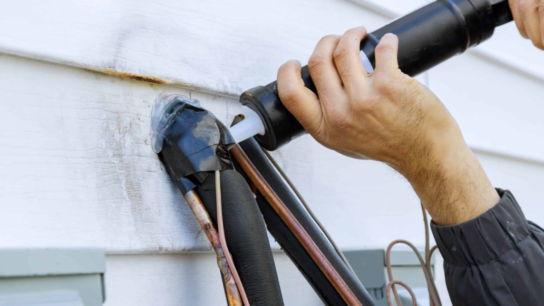Outdoor lighting serves multiple purposes, from enhancing safety and security to creating a warm and inviting ambiance. By strategically designing and implementing outdoor lighting solutions, homeowners can illuminate their outdoor spaces effectively while adding aesthetic appeal and functionality. In this guide, we’ll explore outdoor lighting ideas that prioritize safety and ambiance, along with tips for achieving optimal results.
Subtitles:
- Safety-focused Lighting Design
- Ambiance-enhancing Lighting Features
Safety-focused Lighting Design
1. Pathway Illumination
Illuminate pathways, walkways, and driveways with low-level lighting to guide pedestrians and prevent tripping hazards. Use pathway lights, bollard lights, or ground-mounted fixtures to mark the route clearly.
Tips:
- Even Spacing: Install pathway lights at regular intervals along the path for consistent illumination. Ensure sufficient brightness without creating glare or harsh shadows.
- Low Voltage Lighting: Use low-voltage LED pathway lights for energy efficiency and durability. Choose fixtures with downward-facing or shielded light to minimize light pollution and glare.
- Motion Sensors: Consider incorporating motion sensor lights along pathways for added security and energy conservation. These lights activate when motion is detected, providing temporary illumination as needed.
2. Entryway and Door Lighting
Install outdoor lighting fixtures near entryways, doors, and porches to enhance visibility, deter intruders, and welcome guests. Use wall-mounted sconces, overhead lights, or pendant fixtures for functional and decorative purposes.
Tips:
- Fixture Placement: Position outdoor lights near entry doors at eye level or slightly above for optimal visibility and aesthetics. Ensure fixtures are weather-resistant and rated for outdoor use.
- Warm Lighting: Choose warm white or soft amber light bulbs for entryway lighting to create a welcoming and inviting ambiance. Avoid overly bright or harsh lighting that may cause glare.
- Timer Controls: Use timers or smart lighting controls to automate entryway lighting based on dusk-to-dawn schedules or specific time settings. Adjust brightness levels for different occasions or activities.
3. Landscape and Garden Lighting
Highlight landscaping features, trees, shrubs, and garden areas with accent lighting to showcase their beauty and create focal points in the outdoor space. Use spotlights, uplights, and well lights for dramatic effects.
Tips:
- Accent Lighting: Position lighting fixtures strategically to accentuate architectural elements, sculptures, water features, and plantings. Experiment with angles and shadows for artistic effects.
- Color Temperature: Select lighting fixtures with adjustable color temperature or use colored filters to create different moods and atmospheres in the landscape. Coordinate lighting colors with seasonal themes or events.
- Zoning and Dimming: Install lighting zones or circuits with dimming capabilities to control brightness levels and create dynamic lighting scenes. Gradually transition from ambient lighting to accent lighting for visual interest.
Ambiance-enhancing Lighting Features
1. Outdoor Dining and Entertainment Areas
Illuminate outdoor dining spaces, patios, decks, and entertainment areas with ambient lighting to enhance ambiance and functionality. Use string lights, pendant lamps, or lanterns for a cozy atmosphere.
Tips:
- Overhead Lighting: Hang string lights or pendant lamps above dining tables, seating areas, or pergolas for soft and inviting illumination. Choose weather-resistant fixtures suitable for outdoor use.
- Task Lighting: Incorporate task lighting such as wall-mounted sconces or floor lamps near cooking areas, grills, or outdoor kitchens for functional lighting during meal preparation and serving.
- Decorative Lighting: Use decorative lanterns, candles, or flameless LED candles to add warmth and charm to outdoor dining settings. Place lanterns along pathways or on tabletops for decorative accents.
2. Water Feature Lighting
Enhance the beauty of water features such as ponds, fountains, and pools with underwater lighting, spotlights, or floating lights. Illuminating water features adds visual interest and creates a tranquil ambiance.
Tips:
- Underwater Fixtures: Install submersible LED lights or underwater fixtures to illuminate water features from below. Use colored lights or color-changing LEDs for dynamic effects.
- Spotlighting: Use spotlights or well lights to highlight cascading waterfalls, bubbling fountains, or statues within water features. Position lights strategically for optimal reflection and sparkle.
- Safety Considerations: Ensure underwater lighting fixtures are designed for safety and durability in wet environments. Use waterproof and corrosion-resistant materials for long-lasting performance.
3. Architectural and Facade Lighting
Highlight architectural features, facades, and outdoor structures such as walls, columns, and pergolas with wall-mounted lights, uplights, or wash lights. Architectural lighting adds depth and dimension to outdoor spaces.
Tips:
- Up Lighting: Install uplights or wash lights at the base of architectural elements to create dramatic effects and emphasize textures. Adjust light angles to enhance shadows and depth.
- Facade Wash Lighting: Use wall-mounted fixtures or floodlights to wash the exterior walls of buildings or structures with soft, even light. Choose warm white or neutral tones for a welcoming glow.
- Grazing and Silhouetting: Experiment with grazing techniques to highlight textures or silhouetting effects to outline shapes and contours. These techniques add visual interest and depth to outdoor surfaces.
Incorporating a combination of safety-focused and ambiance-enhancing lighting features can transform outdoor spaces into functional, inviting, and visually appealing areas. By carefully selecting lighting fixtures, adjusting brightness levels, and utilizing smart controls, homeowners can achieve optimal outdoor lighting results that enhance safety, ambiance, and overall enjoyment of their outdoor environment.








